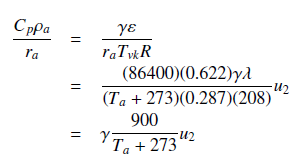Mathematical Models and Comparative Analysis for Rice and Soya Bean Irrigation Crop Water Needs: A Case Study of Bida Basin Niger State, Nigeria
Keywords:
Bida Basin, Crop water coefficient, EvapotranspirationAbstract
In this manuscript, mathematical models for cropping water need (C.W.N) and the size of land for irrigation (S.L.I) were formulated. The solutions of the models for Crop water need for Soya beans and Rice, and the size of land for irrigation (S.L.I) of the two crops was obtained. We fill the gap by considering the size of the irrigation land which is not considered by the Food and Agriculture Organization (F.A.O). The computational Method of solutions is carried out to get effective results. The climatic data of the study area (Bida Basin) under which our research is based includes: Rainfall, Humidity, Sunshine hours, minimum and maximum temperature, evapotranspiration were secondary data collected from Nigeria Metrological Society (NIMET). We compared the results of CROPWAT 8.0 software developed by the Food and Agriculture Organization (F.A. O) and our computational method so that we can arrive at a new finding and better results. The results for the computational method with the size of Land for irrigation shows that there is an increase in crop water need for the crops than the results of CROPWAT 8.0 software developed by the Food and Agriculture Organization (F.A. O) in which the size for the land is not considered. We therefore, recommended that the integral calculus can be used to estimate the irregular shape of the size of the land if the land shape is not in rectangular form before solutions are given for accuracy and effective results.

Published
How to Cite
Issue
Section
Copyright (c) 2021 Journal of the Nigerian Society of Physical Sciences

This work is licensed under a Creative Commons Attribution 4.0 International License.







